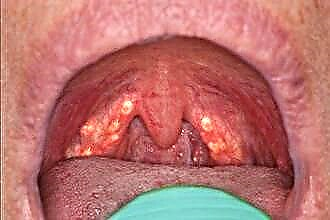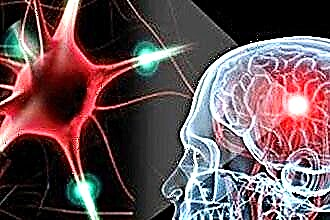In children, both younger and older than 3 years old, who have a cold, an inflammatory process in the sinuses may begin. Sinusitis (or inflammation of the paranasal sinuses) appears for various reasons, and the symptoms of sinusitis in children may also differ depending on the age of the child. As a rule, such an ailment occurs against the background of influenza, measles, scarlet fever and other infectious diseases and is their complication.
In some cases, sinusitis can result from an allergy to a particular irritant. Often, inflammation of the sinuses in children 3 or more years old provoke diseases of the teeth of the upper jaw. Risk factors are the curvature of the nasal septum and congenital deformity of the nasal passages.
Symptoms
 In fact, the signs of sinusitis in babies can be very different. However, nasal congestion should be cited as key. In children, normal breathing is disturbed, a nasal tone appears in the voice. The change in vocal timbre occurs because the sinuses cease to be properly ventilated.
In fact, the signs of sinusitis in babies can be very different. However, nasal congestion should be cited as key. In children, normal breathing is disturbed, a nasal tone appears in the voice. The change in vocal timbre occurs because the sinuses cease to be properly ventilated.
In the vast majority of cases, a runny nose is diagnosed, which does not go away for a long time (about 2 weeks). Profuse nasal discharge may appear - transparent or with a yellowish tinge.
With sinusitis, children often complain of pain around the nose and in the bridge of the nose, the intensity of which increases in the late afternoon. Gradually, the pain stops concentrating in any one place. Then there are severe headaches.
A common symptom of sinusitis in children is an increased body temperature (as a rule, it rises to subfebrile values and does not exceed 39 degrees). This symptom is typical for the acute form of the disease, with chronic sinusitis it may not be present.
Sinusitis in children, the symptoms of which are practically no different from those in adults, will also be accompanied by:
- general weakness of the body;
- deterioration in sleep patterns;
- decreased appetite;
- a feeling of dryness in the throat;
- severe dry cough (worse at night);
- possible decrease in hearing and smell acuity.
If the child is 3 years old or less, then the symptoms may be mild and somewhat blurred due to the underdevelopment of the paranasal sinuses. After 3-4 years, the formation of all sinuses is gradually completed. In this case, the manifestation is brighter.
Types and forms of sinusitis
The classification of sinusitis is based on different criteria. Depending on the location of the affected sinus, sinusitis in a child can be presented in the form of sinusitis, frontal sinusitis, ethmoiditis and sphenoiditis. Sinusitis should be understood as inflammation within the maxillary sinuses. With sphenoiditis, the sphenoid sinuses are affected. Ethmoiditis is an inflammation of the ethmoid cells, frontal sinusitis is an inflammatory process in the frontal paranasal sinuses.
If we take as a basis the causes of the onset of the disease, sinusitis can be divided into the following types:
- Traumatic. Inflammation in this case appears due to bruises of the head or nose.
- Viral sinusitis begins with the penetration of various viruses.

- Bacterial - Inflammation occurs after bacteria damage the sinuses.
- Fungal sinusitis is caused by pathogens.
- Mixed - a type in which inflammation is provoked by various types of bacteria and viruses.
- Allergic sinusitis occurs when the body responds to a specific pathogen (animal hair, pollen, dust, and so on).
As for the form of sinusitis, it can be acute and chronic. A two-year-old child and older children most often get sick with an acute form of sinusitis. It is characterized by the suddenness and rapidity of the development of the inflammatory process. The key cause of acute sinusitis is improper treatment of colds and infectious diseases against a background of greatly reduced immunity. The duration of the acute form of the disease does not exceed 8 weeks.
If 8 weeks have passed and the symptoms have not disappeared anywhere, we can talk about chronic sinusitis. Symptoms in this case will be less pronounced than in the acute form. Moreover, they can disappear for a while (during the period of remission), and then again manifest themselves with renewed vigor.
Diagnostics and treatment tactics
Treatment always begins with a diagnosis. And the specific year of birth of the child and the total number of years does not matter. It is possible to correctly draw up a rehabilitation course only after diagnostic measures. In addition to interviewing a small patient, doctors prescribe an X-ray examination of the paranasal sinuses, a general blood test and a computed tomography.
X-ray is less informative than CT. At the same time, the image can show whether there is a thickening of the mucous membrane, and in what condition the sinuses are. A blood test allows you to determine the number of leukocytes in the blood, as well as the erythrocyte sedimentation rate. With sinusitis, the total number will be very high. Computed tomography examines the current condition of the sinuses.
 Now let's talk about treatment. Main directions:
Now let's talk about treatment. Main directions:
- Elimination of symptoms. Symptomatic treatment involves temporarily avoiding outdoor walks, starting anti-inflammation medications, and lowering body temperature. In addition, the principle of drinking plenty of fluids should be adhered to.
- Rinsing the nasal passages and the use of drugs to narrow the blood vessels. You should carefully use vasoconstrictor drugs. The course of treatment should not exceed 7 days, otherwise there is a high probability of overdrying the mucous membrane. For children it is best to use the following drugs: "Vibrocil", "Otrivin", "Naftizin", "Nazivin". Regarding rinsing solutions, we recommend giving preference to conventional saline solution or Marimer and Aqua Maris.
- Antibiotic therapy is required only if the child has purulent sinusitis. In any other case, antibacterial agents are not used. To eliminate foci of infection, doctors prescribe drugs from the amoxicillin group - Hikontsil, Amosin, Amoxiclav.
- Allergic sinusitis can also be treated with medication. But instead of antibiotics, antihistamines are prescribed, for example, "Desal", "Cetrin", "Zirtek" and some others.
Surgical treatment in the form of a puncture (puncture of the paranasal sinuses and pumping out pus) is used as a last resort, when drug therapy has been ineffective.
- Means from the arsenal of traditional medicine. In order to create optimal conditions for ventilation of the sinuses and the outflow of mucus, we recommend using inhalation (but only after consulting your doctor). For these purposes, decoctions of chamomile, sage, oregano and eucalyptus are in demand. Inhalation with nebulizers and cold inhalations over finely chopped horseradish or garlic help well.
Don't forget about prevention
Unfortunately, it is impossible to completely exclude the possibility of sinusitis in a child, but you can significantly reduce the risk of inflammation of the paranasal sinuses. Doctors recommend correctly and to the end to cure measles, flu, scarlet fever, runny nose and other infectious ailments.
 It is imperative to work on strengthening your immune system. Parents need to make sure that the child leads an active lifestyle, does exercises in the morning and often walks in the fresh air. Do not forget about proper nutrition - add foods high in vitamins and minerals to your diet. Also, stick to the following tips:
It is imperative to work on strengthening your immune system. Parents need to make sure that the child leads an active lifestyle, does exercises in the morning and often walks in the fresh air. Do not forget about proper nutrition - add foods high in vitamins and minerals to your diet. Also, stick to the following tips:
- for a prolonged runny nose, always see a doctor;
- ventilate living rooms regularly;
- control the humidity level in the room (at least 50-60 percent);
- do wet cleaning every day;
- try to start hardening the baby;
- avoid hypothermia.
All this will help to significantly reduce the risk of various forms and types of sinusitis in children.
Improving immunity is one of the most important conditions for a healthy and fulfilling life. A well-functioning immune system is able to independently and effectively fight some viral and bacterial pathogens.
Create an optimal microclimate at home
We advise you to pay attention to your home microclimate. Optimum humidity and air temperature contributes to a speedy recovery. The most suitable temperature for a child is between 18 and 20 degrees. Exceeding these values is fraught with deterioration in health. If the temperature in the rooms is below 18 degrees, the baby may catch a cold.
 In summer, it is allowed to use air conditioners and other climatic equipment only if the child is not in the room at that time. In the cold season, do not use heating devices overly actively. This can lead to a decrease in moisture levels and dryness of the mucous membranes in the nose and throat.
In summer, it is allowed to use air conditioners and other climatic equipment only if the child is not in the room at that time. In the cold season, do not use heating devices overly actively. This can lead to a decrease in moisture levels and dryness of the mucous membranes in the nose and throat.
One of the most important indicators is humidity. The optimal level is 50 to 70 percent. Excessively dry air dries up the mucous membrane. Excessive humidity, on the contrary, can cause a runny nose. Maintaining the target is quite simple - regularly wet cleaning, buy an aquarium or special portable air humidifiers.
An integral component of an optimal microclimate is air purity. Remember to open windows and ventilate rooms from time to time. In particular, this should be done continuously 10 minutes before bedtime. In the summer, the windows may not be closed at all (if the outside air temperature allows it).
Summing up
A long runny nose in a baby does not always indicate a cold. It is possible that it indicates an inflammation of the paranasal sinus. You don't have to try to diagnose yourself. It is impossible to do this at home (without diagnostic procedures).
Do not self-medicate. Wrong tactics can aggravate the clinical picture and lead to complications. Medicines from the arsenal of traditional medicine should also be used very carefully and only after the permission of the doctor.
At the first symptoms of sinusitis, seek professional help right away - this is the best you can do for your child. Only a doctor is able to accurately establish the cause of sinusitis, prescribe diagnostics and choose a rehabilitation course, taking into account the age and individual characteristics of the baby.



